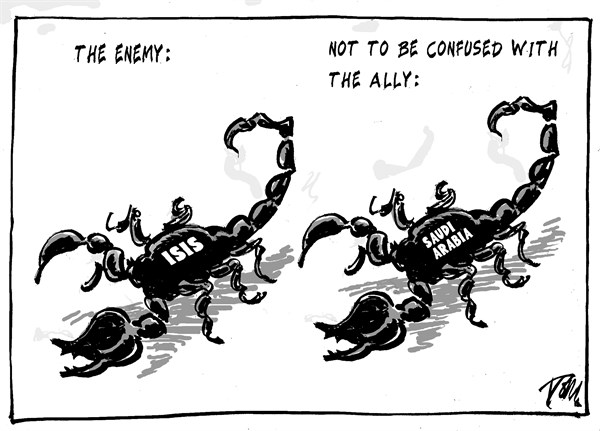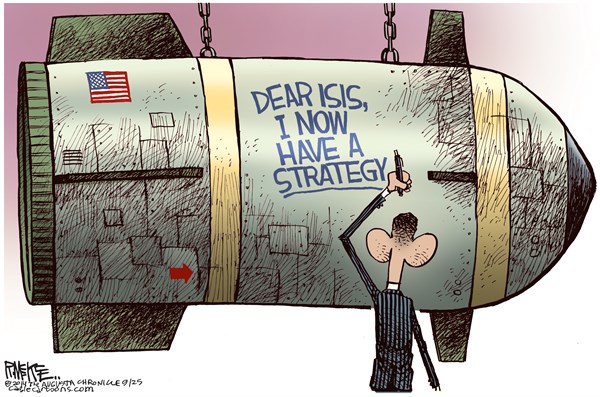In February I gave an interview to Vice UK to help promote a film I had written and financed called The Canyons—I did the press because there was still the idea, the hope, that if myself or the director Paul Schrader talked about the film it would somehow find an audience interested in it and understand what it was: an experimental, guerilla DIY affair that cost $150,000 dollars to shoot ($90,000 out of our own pockets) and that we filmed over twenty days in L.A. during the summer of 2012 starring controversial Millennials Lindsay Lohan and porn star James Deen.
The young journalist from Vice UK asked me about the usual things I was preoccupied with in that moment: my admiration of Martin Scorsese’s The Wolf of Wall Street—the best film I saw in 2013 (not great Scorsese, but better than any other American film that year) and we talked about the movie I’m writing for Kanye West, my love of Terrence Malick (though not To The Wonder), a miniseries I was developing about the Manson murders for FOX (but because of another Manson series going into production at NBC the miniseries has now been cancelled), the Bret Easton Ellis Podcast (link), the possibility of a new novel I had begun in January of 2013 and that I lost interest in but hoped to get back to; we talked about my problems with David Foster Wallace, my love of Joan Didion, as well as Empire versus post-Empire (link) and we talked about, of course, The Canyons. But the first question the young journalist asked me wasn’t about the movie—it was about why I was always referring to Millennials as Generation Wuss on my Twitter feed. And I answered her honestly, unprepared for the level of noise my comments caused once the Vice UK piece was posted.
I have been living with someone from the Millennial generation for the last four years (he’s now 27) and sometimes I’m charmed and sometimes I’m exasperated by how him and his friends—as well as the Millennials I’ve met and interacted with both in person and in social media—deal with the world, and I’ve tweeted about my amusement and frustration under the banner “Generation Wuss” for a few years now. My huge generalities touch on their over-sensitivity, their insistence that they are right despite the overwhelming proof that suggests they are not, their lack of placing things within context, the overreacting, the passive-aggressive positivity, and, of course, all of this exacerbated by the meds they’ve been fed since childhood by over-protective “helicopter” parents mapping their every move.
These are late-end Baby Boomers and Generation X parents who were now rebelling against their own rebelliousness because of the love they felt that they never got from their selfish narcissistic Boomer parents and who end up smothering their kids, inducing a kind of inadequate preparation in how to deal with the hardships of life and the real way the world works: people won’t like you, that person may not love you back, kids are really cruel, work sucks, it’s hard to be good at something, life is made up of failure and disappointment, you’re not talented, people suffer, people grow old, people die. And Generation Wuss responds by collapsing into sentimentality and creating victim narratives rather than acknowledging the realities of the world and grappling with them and processing them and then moving on, better prepared to navigate an often hostile or indifferent world that doesn’t care if you exist.
I never pretended to be an expert on Millenials and my harmless tweeting about them was solely based on personal observation with the reactions to the tweets predictably running along generational lines. For example, one of the worst fights my boyfriend and I endured was about the Tyler Clemente suicide here in the United States. Clemente was an 18 year-old Rutger’s University student who killed himself because he felt he was being bullied by his roommate Dharun Ravi. Ravi never touched Tyler or threatened him but filmed Tyler making out with another man unbeknownst to Tyler and then tweeted about it. Embarrassed by this web-cam prank, Tyler threw himself off the George Washington Bridge a few days later.
The fight I had with my boyfriend was about victimization narratives and cyber-“bullying” versus imagined threats and genuine hands-on bullying. Was this just the case of an overly sensitive Generation Wuss snowflake that made national news because of how trendy the idea of cyber-bullying was in that moment (and still is to a degree) or was this a deeply troubled young person who simply snapped because he was brought down by his own shame and then was turned into a victim/hero (they are the same thing now in the United States) by a press eager to present the case out of context and turning Ravi into a monster just because of a pretty harmless—in my mind—freshman dorm-room prank? People my age tended to agree with my tweets, but people my boyfriend’s age tended to, of course, disagree.
But then again my reaction stems from the fact that I am looking at Millenials from the POV of a member of one of the most pessimistic and ironic generations that has ever roamed the earth—Generation X—so when I hear Millenials being so damaged by “cyber-bullying” that it becomes a gateway to suicide—it’s difficult for me to process. And even my boyfriend agrees that Generation Wuss is overly sensitive, especially when dealing with criticism. When Generation Wuss creates something they have so many outlets to display it that it often goes out into the world unfettered, unedited, posted everywhere, and because of this freedom a lot of the content displayed is rushed and kind of shitty and that’s OK—it’s just the nature of the world now—but when Millennials are criticized for this content they seem to collapse into a shame spiral and the person criticizing them is automatically labeled a hater, a contrarian, a troll.
And then you have to look at the generation that raised them, that coddled them in praise—gold medals for everyone, four stars for just showing up—and tried to shield them from the dark side of life, and in turn created a generation that appears to be super confident and positive about things but when the least bit of darkness enters into their realm they become paralyzed and unable to process it.
My generation was raised by Baby Boomers in a kind of complete fantasy world at the height of the Empire: Boomers were the most privileged and the best educated children of The Great Generation, enjoying the economic boom of post-World War II American society. My generation realized that like most fantasies it was a somewhat dissatisfying lie and so we rebelled with irony and negativity and attitude or conveniently just checked-out because we had the luxury to do so. Our reality compared to Millennial reality wasn’t one of economic hardship. We had the luxury to be depressed and ironic and cool. Anxiety and neediness are the defining aspects of Generation Wuss and when you don’t have the cushion of rising through the world economically then what do you rely on? Well, your social media presence: maintaining it, keeping the brand in play, striving to be liked, to be liked, to be liked.
And this creates its own kind of ceaseless anxiety. This is why if anyone has a snarky opinion of Generation Wuss then that person is labeled by them as a “douche”—case closed. No negativity—we just want to be admired. This is problematic because it limits discourse: if we all just like everything—the Millennial dream—then what are we going to be talking about? How great everything is? How often you’ve pressed the like button on Facebook? The Millennial site Buzzfeed has said they are no longer going to run anything negative—well, if this keeps spreading, then what’s going to happen to culture? What’s going to happen to conversation and discourse?
If there doesn’t seem to be an economic way of elevating yourself then the currency of popularity is just the norm now and so this is why you want to have thousands and thousands of people liking you on Twitter, Facebook, Instagram, Tumbler—and you try desperately to be liked. The only way to elevate yourself in society is through your brand, your profile, your social media presence. A friend of mine—also a member of Generation Wuss—remarked that Millennials are more curators than artists, a generation of “aestheticists…any young artist who goes on Tumbler doesn’t want to create actual art—they either want to steal the art or they want to BE the art.”
I forgot about the Vice interview but was reminded of it due to a minor explosion that occurred after it was posted and the term Generation Wuss received an inordinate amount of press and I was immediately asked to appear on talk shows and podcasts and radio programs to discuss “the phenomenon” of Generation Wuss. The people who agreed with my casual, tossed-off assessments skewed older but I was surprised by the number of young people who agreed with me as well, Millennials who also had complaints about their generation.
The older people wanted to share examples: a father related a story how he remembered watching in frustration as his son participated in a tug-of-war game with his classmates on the field of his elementary school and after a minute or two the well-meaning coach announced the game was officially a tie, told the kids they did a great job, and everyone got a ribbon. Occasionally there were darker stories: guilt-ridden parents chastising themselves for coddling kids who when finally faced with the normal reality of the world drifted into drugs as an escape…from the normal reality of the world. Parents kept reaching out and told me they were tormented by this oppressive need to reward their kids constantly in this culture. That in doing so they effectively debilitated them from dealing with the failures we all confront as get older, and that their children were unequipped to deal with pain.
I didn’t appear on any of the talk shows because I don’t pretend to be an expert on this generation any more than I feel I’m an expert on my own: I don’t feel like that old man complaining about the generation supplanting his. As someone who throughout his own career satirized my generation for their materialism and their shallowness, I didn’t think that pointing out aspects I noticed in Millennials was that big of a deal. But in the way that the 24-48 hour news cycle plays itself out I briefly was considered an “expert” and I kept getting bombarded with emails and tweets.
What the Vice interview didn’t allow was that because I’ve been living with someone from this generation I’m sympathetic to them as well, remembering clearly the hellish year my college-educated boyfriend looked for a job and could only find non-paying internships. Add in the demeaning sexual atmosphere that places a relentless emphasis on good looks (Tinder being the most prevalent example) in such a superficially nightmarish way it makes the way my generation hooked-up seem positively chaste and innocent by comparison.
So I’m sympathetic to Generation Wuss and their neurosis, their narcissism and their foolishness—add the fact that they were raised in the aftermath of 9/11, two wars, a brutal recession and it’s not hard to be sympathetic. But maybe in the way Lena Dunham is in “Girls” a show that perceives them with a caustic and withering eye and is also sympathetic. And this is crucial: you can be both. In-fact in order to be an artist, to raise yourself above the din in an over-reactionary fear-based culture that considers criticism elitist, you need to be both. But this is a hard thing to do because Millennials can’t deal with that kind of cold-eye reality. This is why Generation Wuss only asks right now : please, please, please, only give positive feedback please.























 …I’ll start today’s Rant with a personal story, we got a 6.2 magnitude Quake in Willow a couple of days ago, just about 80 miles or so from where I am located, which was the cause of much excitement and conversation around here, but very little in the way of damage. Preppers may have lost a few Pickle Jars off the shelves and a few paintings may have dropped off some walls, but not much more than that.
…I’ll start today’s Rant with a personal story, we got a 6.2 magnitude Quake in Willow a couple of days ago, just about 80 miles or so from where I am located, which was the cause of much excitement and conversation around here, but very little in the way of damage. Preppers may have lost a few Pickle Jars off the shelves and a few paintings may have dropped off some walls, but not much more than that.

























